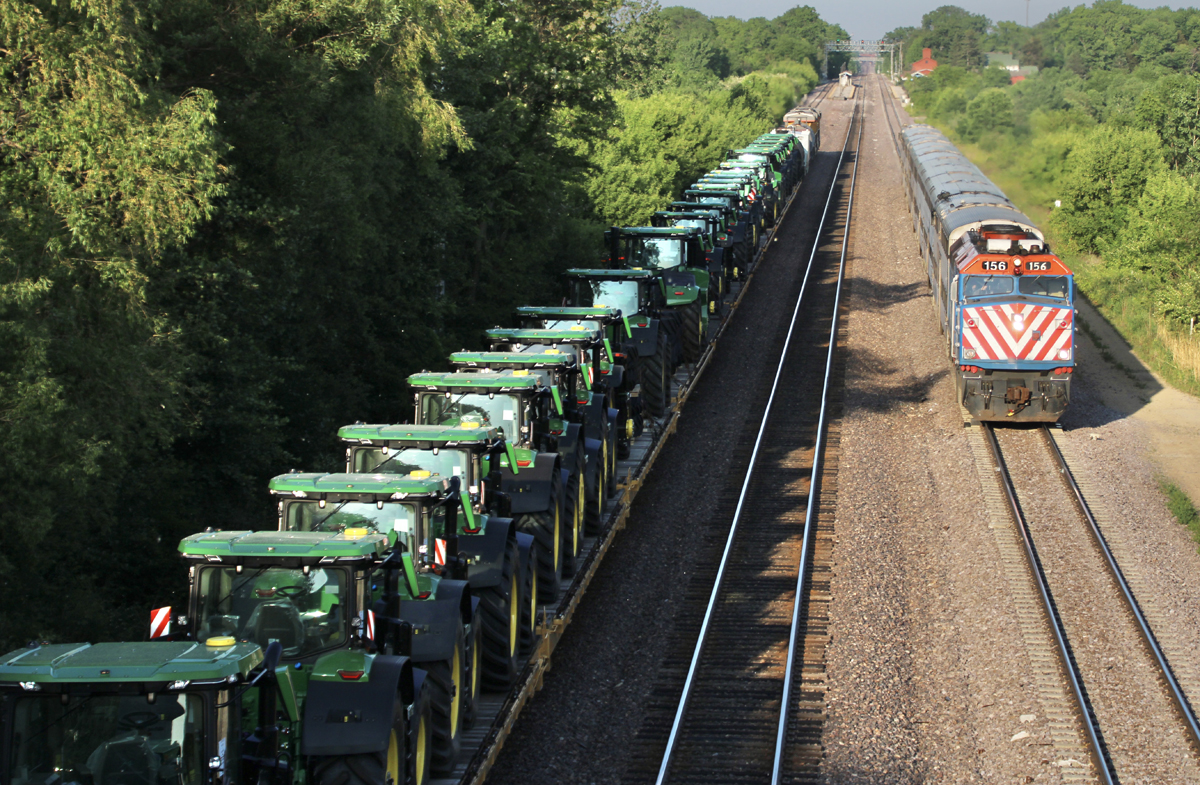
LAKE GENEVA, Wis. — If Class I railroads truly want to grow carload traffic — well, they have a lot of work to do to improve their service.
That was the loud-and-clear message from two presentations Wednesday (July 9) at the summer meeting of the Midwest Association of Rail Shippers, where Aaron Girard of Seneca Foods — the country’s largest processor and shipper of canned and frozen vegetables — and David Panjwani of John Deere & Co. addressed the drawbacks and barriers involved in rail shipping.
Seeking dependability
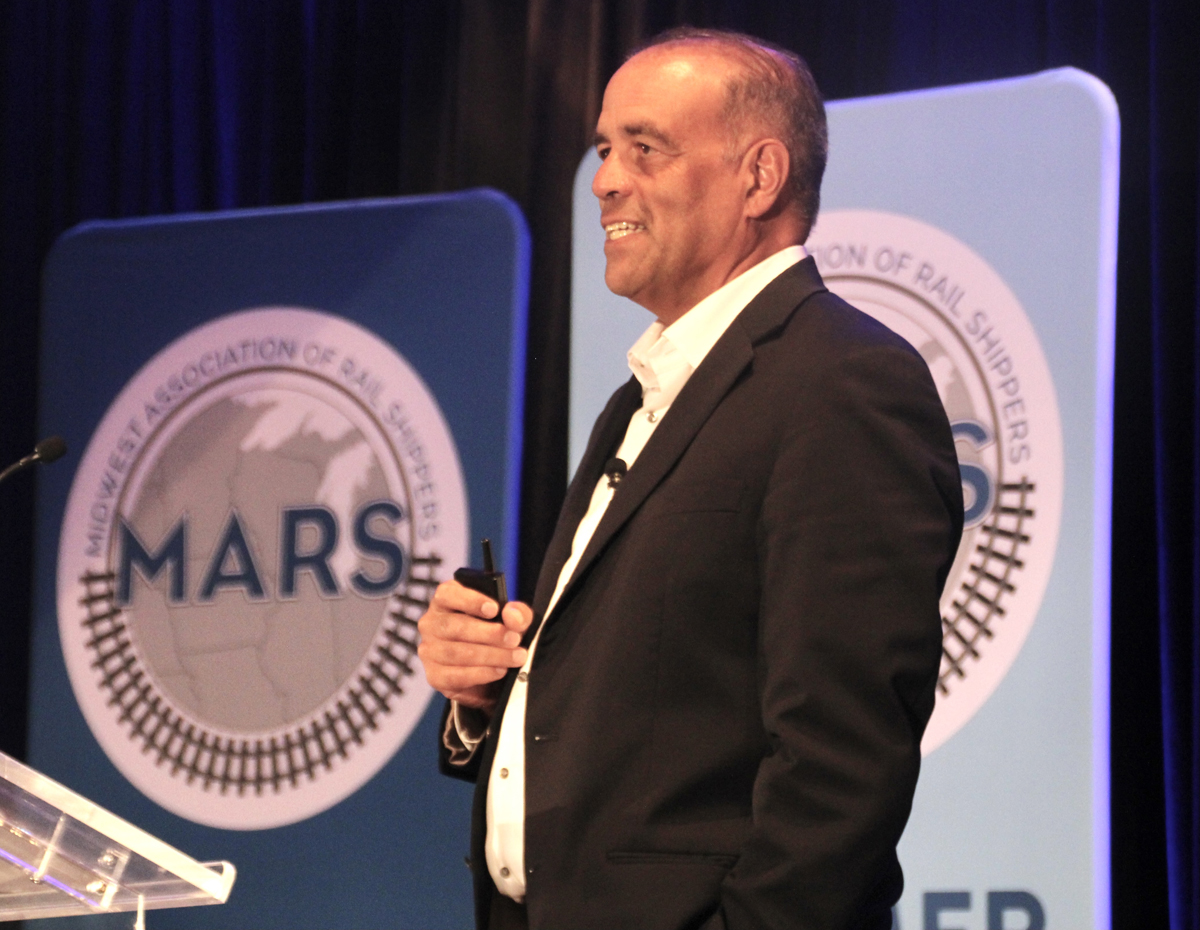
For Deere, the No. 1 issue is clearly one of reliability. The company spends well over $1 billion a year on transportation, said Panjwani, the company’s director of worldwide logistics. For inbound movement of parts and materials to its U.S. factory, the amount of that spend going to rail is the roundest of round numbers: zero. “And as long as I’m in this chair, until I see another reason … that’s going to stay at zero,” he said.
“Because we don’t have the level of trust that we can keep our factories running when something goes wrong,” Panjwani had said earlier. “I view it as an opportunity [for rail], not a ‘no, not ever.’ It’s just more we have to be able to see that predictability and then we’ll go.”
Rail does get some outbound traffic, particularly with smaller machines that can be shipped by container, he said. “That’s the Georgia plants, going west. … We’re going to go with a Schneider, J.B. Hunt, somebody like that and move it, if the cost is there.” For larger machinery, domestic customers have an option to indicate rail or road shipment, he said, although Deere can override that call. “Just from a domestic perspective, it’s probaby less than 10% go rail, because they have had a bad experience or we have, but that option is there. For our international moves the customers don’t care, so we make that call on their behalf. And again, we have to get on that vessel.” That means trucks get the nod.
“We’re never going to just work on what’s the lowest rate … but what’s going to be the total cost,” Panjwani said, who called trucking “the easy button” for most shipping decisions. “When you look at rail, there’s generally a cost advantage, but we have to factor in the time of that potential for delays, for missing vessels, and look at it from a post perspective.”
Dealing with damage
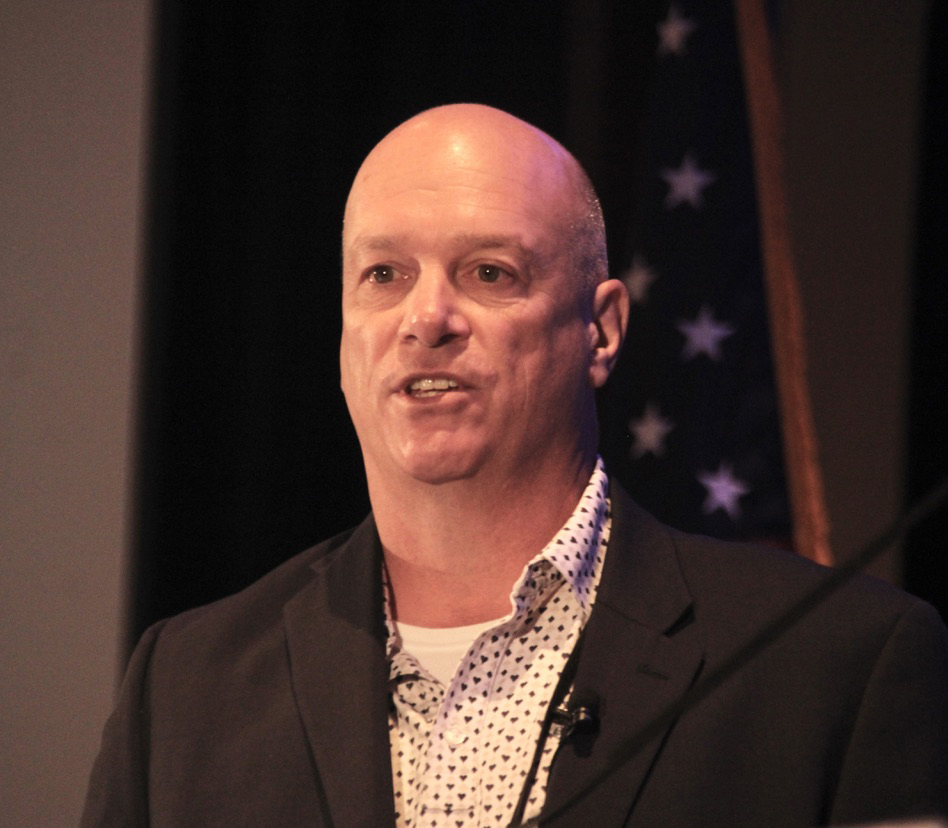
Girard, senior vice president of logistics at Seneca, says his company wants to use rail.
“It’s canned vegetables,” he says. “We get one inventory turn a year. We’re perfect for rail, right?”
But, he said, “The world’s moved on … our customer expectations are completely different.
“The relative pace of changes [for rail] is too slow. Some of our customers demand that we send a tracking every 10 minutes when a truck leaves our facility. … If we miss a truckload shipment by a single minute, our customers will deducte anywhere from $150 to $300. Think about that. … That’s putting your money where your mouth is in terms of execution.”
If timeliness is one issue, damaged shipments is another. Girard says that when an incident occurs, “a culture has developed to blame the customer first and foremost.”
At the time he prepared his presentation, Girard said Seneca was down to two customers that were willing to ship by boxcar.
“Yesterday morning, I got a call from one of those two customers and they said, ‘Aaron, I’m done. No more rail.’ We had a rail car going to this customer within the last month and it registered an 8.6 G impact. The car was a complete mess.
“When we forwarded [the information] to the railroad, the email we got back was, are you buying your dunnage” — the material used to hold shipments in place — “from an AAR approved supplier? I’m not kidding.
“So now I’m down to one customer that will let me ship rail.”
That impact information touches on one of the main pieces of advice Girard offers shippers: develop a relationship with Trinity Rail regarding impact recorders.
“I recommend Trinity because then we have a mechanism to know exactly what’s going on. …Over the last two years, the vast majority of our impacts are on two lanes. We can zoom in and tell you exactly where the issues are now that we’ve got this relationship with Trinity. So I will submit to you that on the lanes that we’re shipping, I know more about how your [railroad] network is performing than you do.”
His other advice: Know the resources available through the Surface Transportation Board. “When you get into a situation where you can’t come to an agreement with the railroad, you can call the STB and say, hey, what do you think about this situation? Here’s all my information, all my data. And they will give you really good advice.”
Some positives
Girard’s observations were not all bad news for railroads. He singled out Norfolk Southern and BNSF for their willingness to address issues.
“In a relationship, if all the risk of the relationship is on one side, the relationship doesn’t work. Right? And so where we’ve been able to grow our real business is where we have a touchpoint, a relationship, and we have an advocate within that railroad that’s willing to share the risk in relationship.”
The company also works with several short lines — Finger Lakes Railroad, Wisconsin & Southern, and Twin Cities & Western — and Girard praises their “great local service. Hands down, the difference is that they think like entrepreneurs. … They’re willing to be flexible and change their schedules in a very short period of time to react to the business. So if railroads want to protect and grow their business, they have to leverage the short lines.”








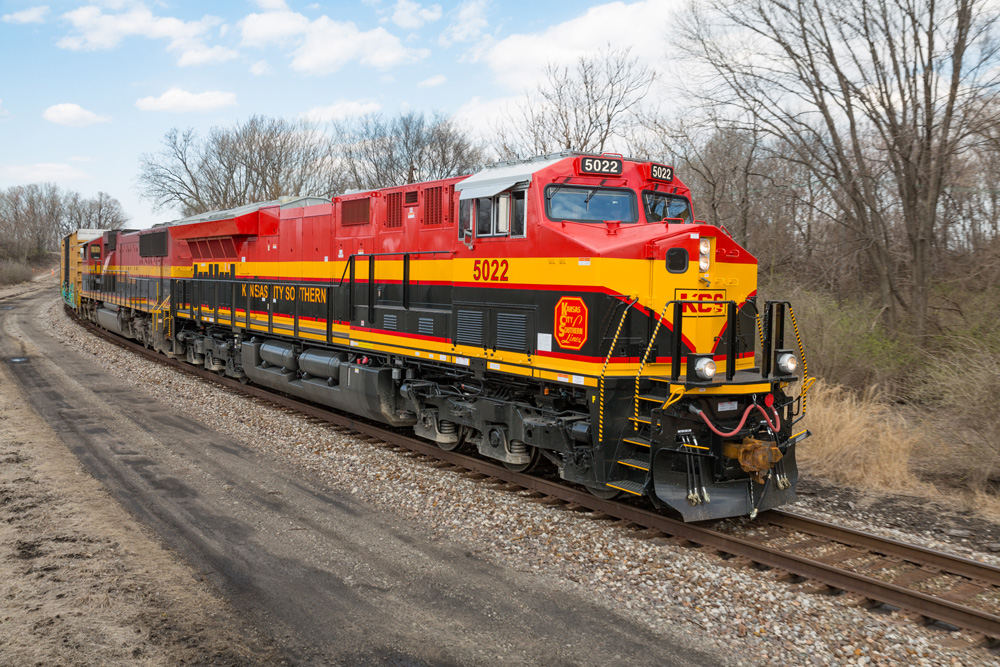
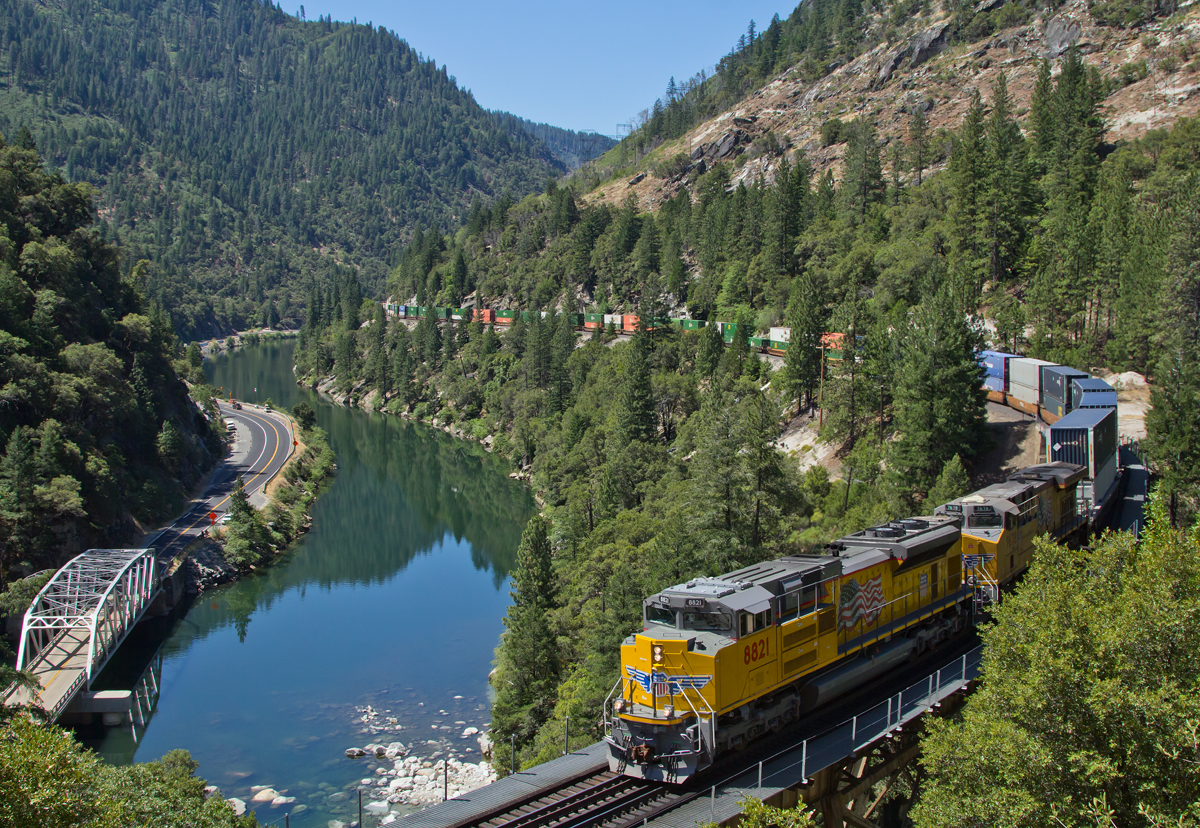
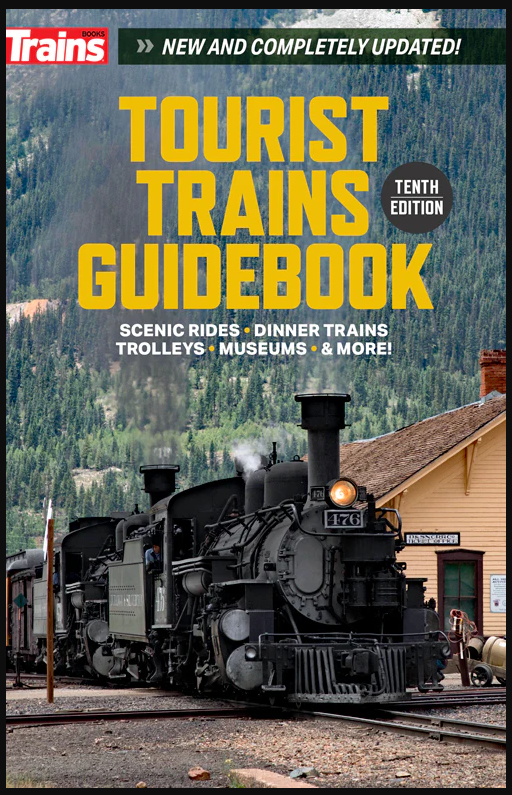
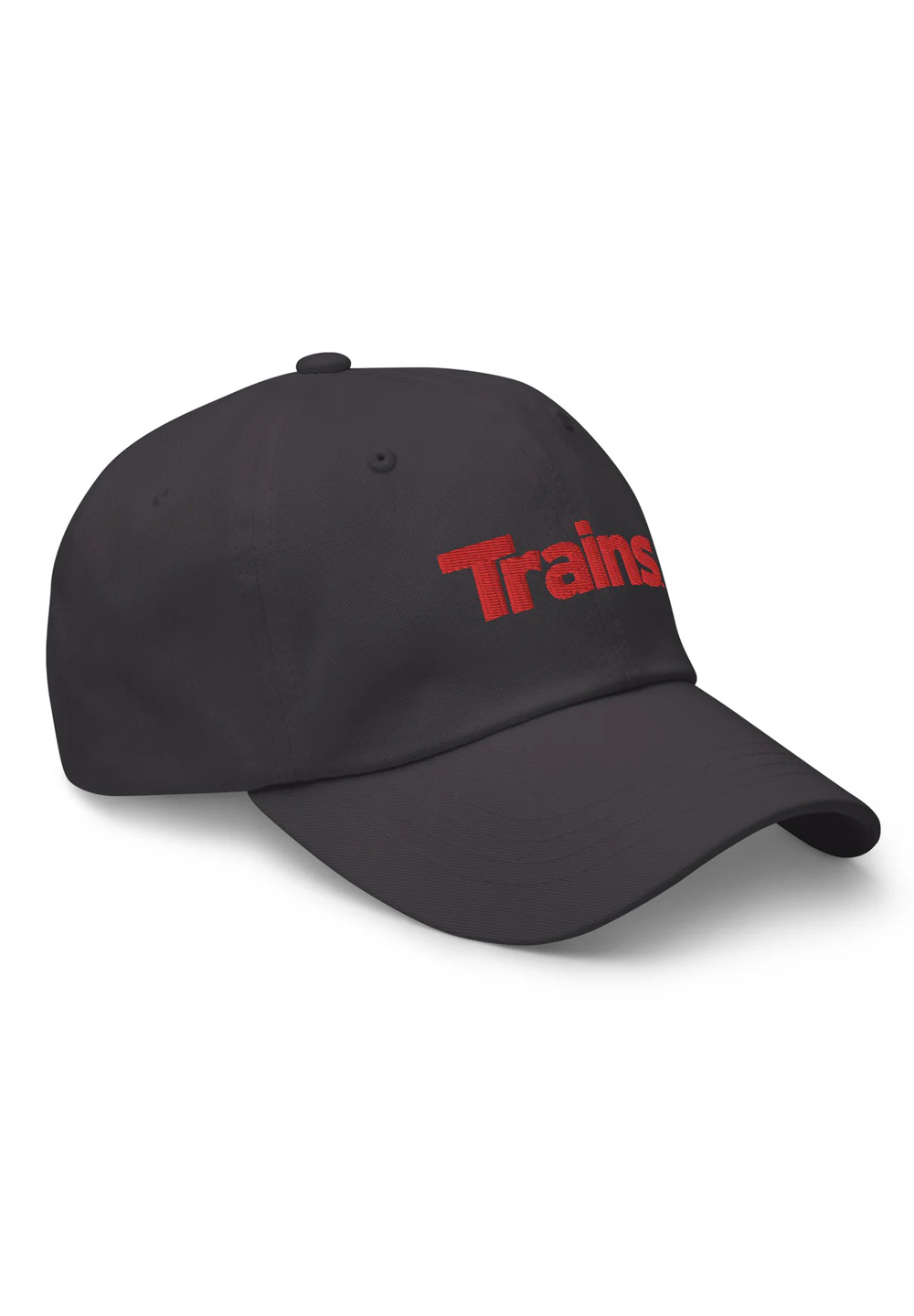
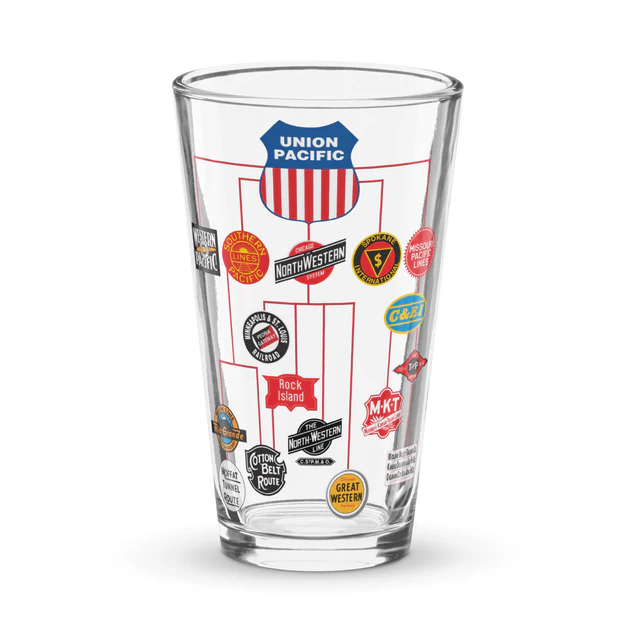
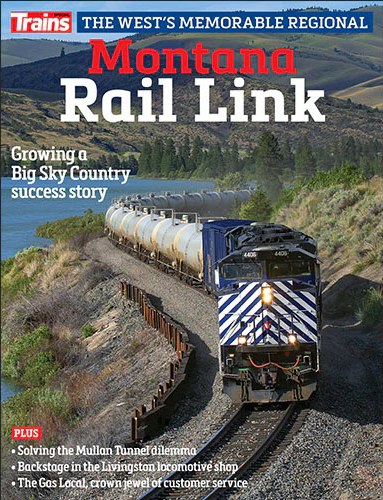
Seems to me the real message is that railroads don’t want this traffic at the price shippers are willing to pay for.
In the past week we’ve heard so much about transcontinental mergers. Anyone think that would bring more carload freight? I don’t.
Here we go again; thank EHH and Wall street for their blind pursuit of lowest OR, i.e. lowest possible service levels. Maybe this will be the wakeup call; ya think?
An 8.6 G impact. What’s that comparable to? Wide open in a drag race in a Tesla Plaid? Is that in a hump yard or flat switching? Making a cut on the road? Made me wonder.
“I know more about how your [railroad] network is performing than you do.”
It’s a sad state of affairs when rail shippers can’t depend on the railroad to monitor their cargo. A related Newswire story from June 26, “Telegraph-RailState partnership offers shippers a view of freight cars, rail network” illustrates how third parties are pointing cameras at the tracks to glean real-time movement and congestion data that can be sold to the shippers.
I don’t think anyone makes dunnage to handle a 8.5G shock, that is a lot of force and kinetic energy being transferred into the cargo. If it was shipping canned veggies, I would assume the last row of cans in the box would be semi flat (and probably leaking from a split) from the weight transfer alone. To avoid this, each can would need to be wrapped in foam like fruit. You ask yourself, why?
Adding expense and packing overhead because the carrier railroad has terrible operational controls?
Dunnage can be; paper, bubble wrap, solid plastics, wood, air pillows, foam, steel, corrugated,
I checked the AAR site and the best I could find was the use of air pillows or “custom” which usually can translate to expensive for a shock this high.
Someone please tell me I am wrong.
Every railroad CEO should be devastated by these comments. Every railroad Board of Directors should be bearing down hard on their CEO to make the necessary corrections.